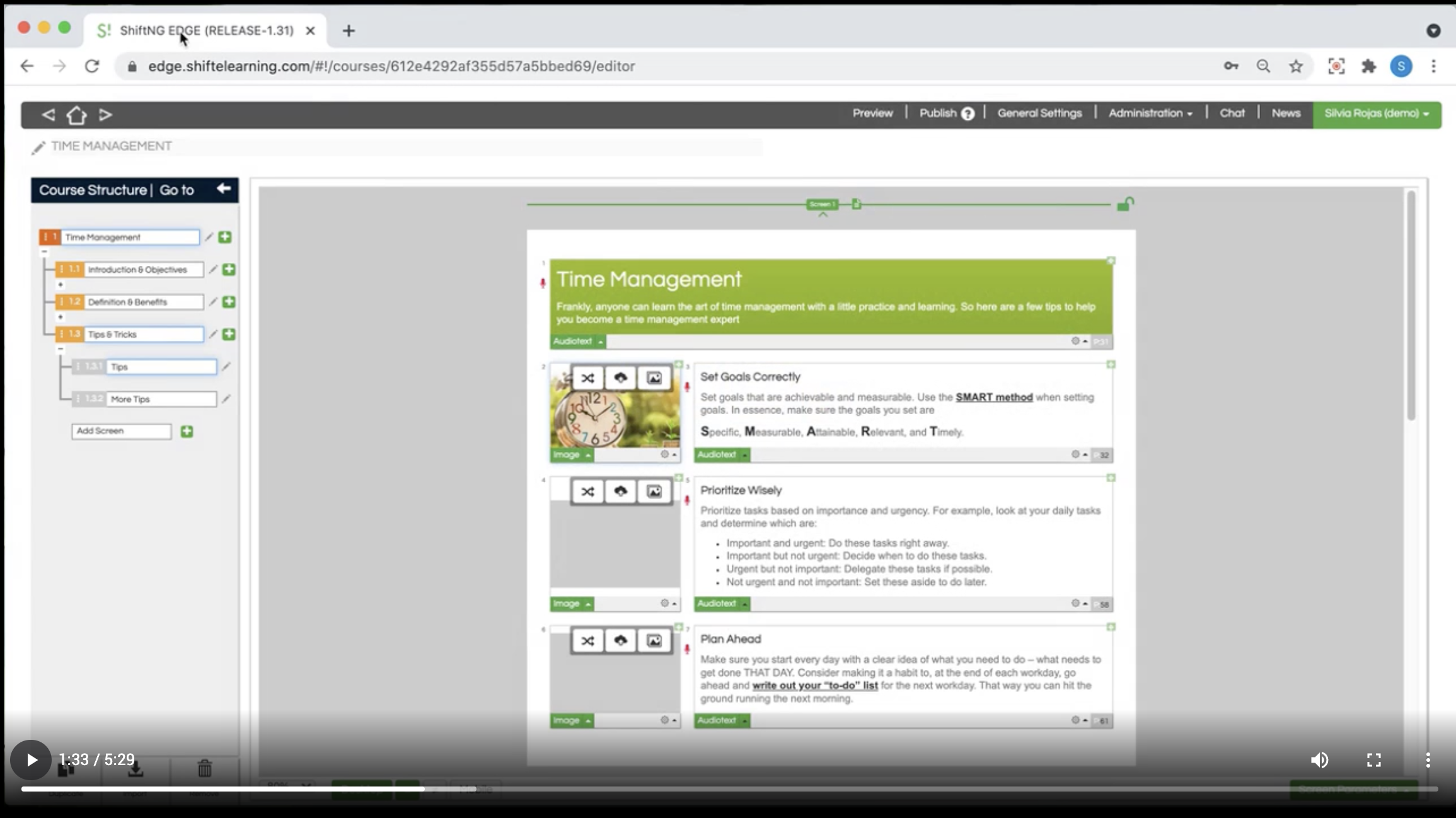In a year filled with uncertainty and drastic changes, we are proud to announce that SHIFT won the highly coveted and prestigious bronze award in Brandon Hall Group’s 2021 Excellence in Technology Awards. This award is our tenth global recognition since 2009 — but this year is especially important as it comes in a category that represents our present and future as an organization: Best Advance in AI for Business Impact — a new award introduced in 2020 in the Future of Work category.
.png?width=700&name=%23HASH%20TAGGING%20(1).png)
“We feel honored to receive this recognition, and it’s particularly pleasing during such an unprecedented and challenging period,” said Randolf Kissling, CEO. “It’s always been our mission to develop best-in-class technology and innovative digital solutions that help companies accelerate their success and stay agile during fast-changing times.
Being globally recognized for building innovative and impactful eLearning software this 2021, is a proud milestone in our journey. One of our core values is to create disruptive technologies that produce business outcomes, and this award is a recognition of our work” he added.
SHIFT’s AI-Powered Content Development Suite includes everything organizations need to quickly create, deliver, automate and manage content effectively. Learn all SHIFT can do for companies on this video:
“Being agile has never been more important for employers, employees, and customers. Our AI-powered features provide substantial benefits to L&D and Marketing teams - helping them make well-informed decisions, optimize their development process, save time by automating tasks, and ultimately create powerful learning and communication experiences that produce real business impact. Ultimately, our success stems from our ability to help our clients increase performance using our AI-powered content development suite” said Kissling.
Brandon Hall Group is a globally renowned research and analyst firm with more than 10,000 clients and 25 years of experience delivering research-based solutions. The Excellence Awards recognize the best organizations that have successfully deployed programs, strategies, processes, systems, and tools that have achieved measurable results. The program attracts entrants from leading companies around the world, as well as mid-market and smaller firms.
“Solution providers must be experts and visionaries in technology, but they also must have the ability to anticipate the diverse needs of employers as they work to adapt to ongoing change,” Brandon Hall Group CEO Mike Cooke said. “This requires a blend of curiosity, empathy, and agility that is difficult to achieve. We have seen an extraordinary level of insight and creativity from our Excellence in Technology winners that has been exciting to see.”
About SHIFT
SHIFT empowers global organizations to create, transform, deliver and analyze knowledge to create business impact. Its multi-awarded holistic learning ecosystem uniquely combines an AI-powered authoring platform, a powerful reporting suite, and expert capabilities to automate content delivery to any device.
For over 20 years, SHIFT has been recognized as a trusted authoring platform provider with unmatched expertise in eLearning, serving over +1,000 global companies.
About Brandon Hall Group
Brandon Hall Group operates the largest and longest-running awards program in Human Capital Management. As an independent HCM research and analyst firm, they conduct studies in Learning and Development, Talent Management, Leadership Development, Diversity, Equity & Inclusion, Talent Acquisition, and HR/Workforce Management. These benchmark studies help organizations by providing strategic insights for executives and practitioners responsible for growth and business results.








